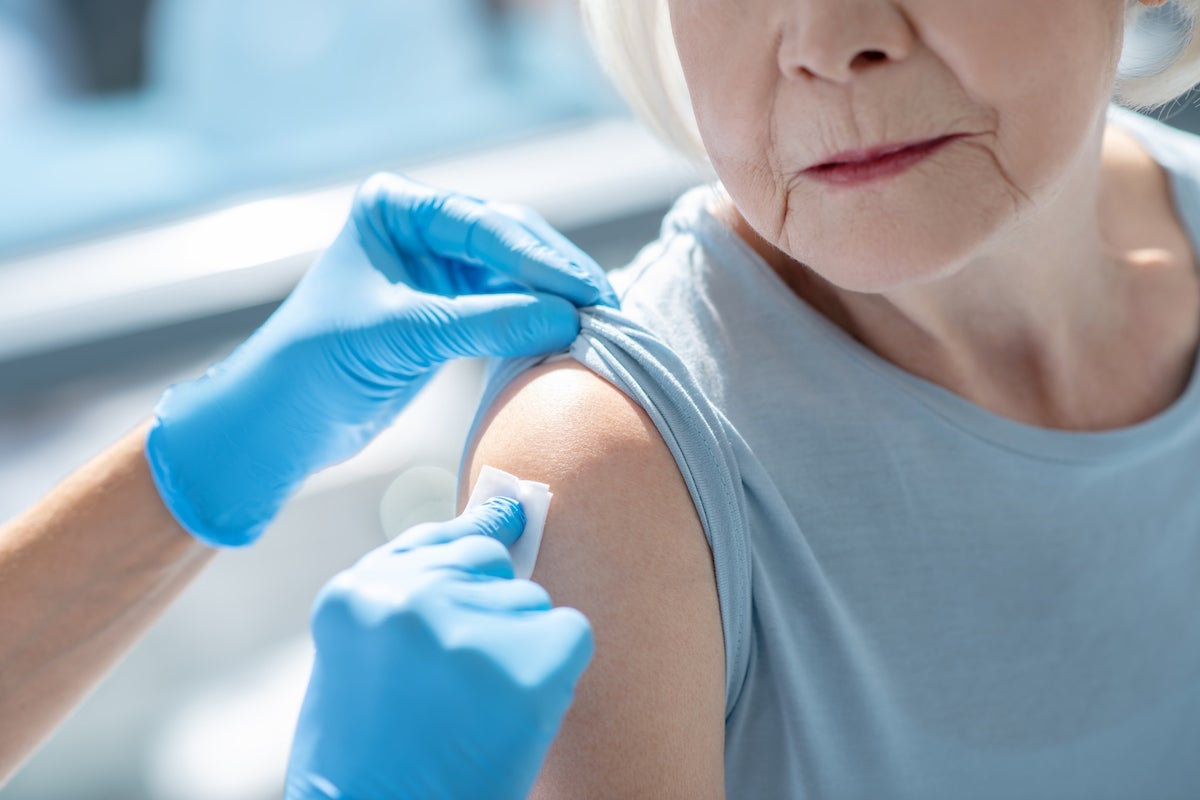A ‘mentoring tree’ of health decision scientists continues to bear fruit

Mentoring plays a critical role in how a tight-knit group of researchers support one another and bring new people into the fold
August 7, 2024 – In 2019, when Sue Goldie was planning a symposium honoring the career achievements of her Harvard T.H. Chan School of Public Health mentor, Milton Weinstein, she wanted to give him a meaningful personal gift.
Goldie decided to create a piece of art showing a tree with many branches, with each branch bearing the name of a person who had been part of the health decision science community that Weinstein, Henry J. Kaiser Research Professor of Health Policy and Management, emeritus, had long nurtured.
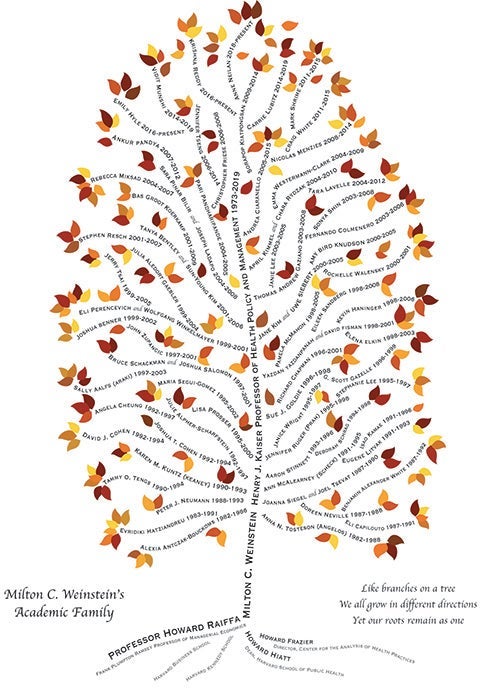
The tree’s roots and branches contained some 80 names. The image of a tree—with each branch/name connected to one or more other branches/names—was a fitting way to portray the strong tradition of mentoring among Harvard Chan School health decision science researchers.
Recently, Goldie, Roger Irving Lee Professor of Public Health and director of the Center for Health Decision Science (CHDS), along with several of her colleagues, met up at the CHDS offices near the Harvard Chan School campus to share their thoughts on mentoring. On hand were Jane Kim, dean for academic affairs and K.T. Li Professor of Health Economics; Ankur Pandya, associate professor of health decision science, and Janice Jhang, who received her MPH in May and is an incoming PhD student in health policy.
In the “niche” area of health decision science—which focuses on how to make better decisions in the health field in the face of uncertainty and complexity—mentoring is particularly important, they said, both to draw in new people who may be unfamiliar with the field and to maintain connections with colleagues working in other departments, schools, and institutions.
Goldie, Kim, and Pandya are all faculty members in the Department of Health Policy and Management (HPM). They are also part of the faculty community in CHDS, a School-wide center that works to improve population health through decision science research, education, and policy translation. Goldie describes CHDS faculty as “sharing a deep sense of commitment to decision science teaching and mentorship across the School and University.”
‘What’s mine is yours’
Goldie and Kim shared memories about their longstanding mentor-mentee relationship, which has lasted more than two decades. They reminisced about a time in 2001 when they worked together late one night. Kim, who was finishing her master’s degree at the time, was putting the finishing touches on the bibliography for a major grant application that Goldie had a deadline to submit the following day to the National Cancer Institute. The application—which went in on time and got funded—was for a study to evaluate the effectiveness and cost-effectiveness of different strategies to reduce global mortality from cervical cancer, which is caused by infection with human papillomavirus (HPV).
In working with Goldie, Kim was learning from someone making a huge impact on the lives of women worldwide. Internationally recognized for mathematical modeling and analyses to guide public health decision-making, Goldie has identified key strategies to improve women’s health in low- and middle-income countries, with a focus on reproductive health and maternal mortality. Her research has zeroed in on viruses of global health importance—notably HPV, toward reducing the burden of cervical cancer, the most common cause of cancer deaths in women worldwide. Her work has informed cervical cancer screening guidelines in several countries and has contributed to policy discussions nationally and globally around the potential of HPV vaccination. In 2005, Goldie was awarded a MacArthur “genius grant” for her work on applying the tools of decision science to public health.
As for Kim, she went on to earn her PhD in health policy and health decision sciences at Harvard University. Her mathematical modeling work on HPV was supported by the very grant that she had worked on with Goldie. Kim joined the Harvard Chan faculty in 2005, then rose up the academic ranks, eventually becoming a full professor and dean for academic affairs, a position she still holds. Kim credits Goldie with helping her advance her career by becoming a better researcher, leader, and mentor herself.
Both Kim and Goldie agree that a good mentor should be generous with their mentee. In addition to supporting their growth as independent scholars, mentors should give their mentees opportunities to engage in practice and policy and promote connections with key people in their field.
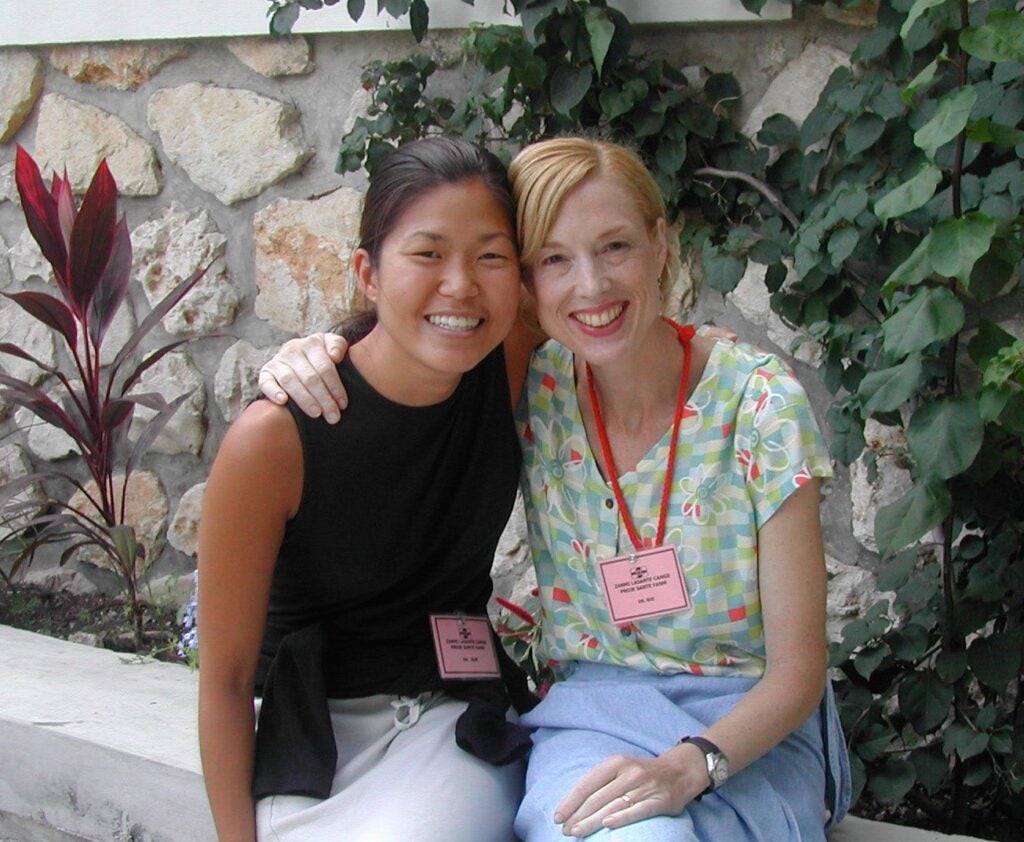
For example, when Kim was a doctoral student, Goldie brought her to a clinical site in Haiti for a study she was working on, to get on-the-ground experience—particularly important for the kind of modeling-based analytic work Kim was doing. For the study, which looked at the role of social, economic, and immunological factors in cervical cancer in a rural region of Haiti, Kim had the opportunity to work with the local health care team as women were screened for cervical cancer, and to see first-hand the health care delivery process.
“I think experiences like this one help young decision analysts recognize the importance of understanding the local context and ensuring their analyses reflect the real-world constraints facing public health decision makers. They also lay the groundwork for the kind of relationship building that is needed for eventual translation of research to policy and practice,” said Goldie.
During Kim’s initial several years as a junior faculty member, Goldie also brought her to major national and global meetings, introducing her to key leaders in the field and providing concrete opportunities for her to have a “voice at the table.” In subsequent years, as Kim progressed in her tenure-track journey and was promoted to associate professor, Goldie described being “very intentional about stepping away and removing myself from her papers, to be sure she was ‘externally’ visible to a tenure review committee as independent.”
Goldie operated from the standpoint of “what’s mine is yours,” said Kim. “She opened up these collaborations with the top epidemiologists at the National Cancer Institute and brought me in with no ownership issues, no proprietary issues, because she wanted me to learn how to interact with them. Eventually, these collaborators at the NCI became my mentors too.”
As the mentor-mentee relationship shifted over time, there were benefits on both sides, Goldie pointed out. “Stepping away from certain research projects gave Jane new leadership opportunities, but it also allowed me to pursue other areas I was passionate about, such as public health education, and to engage in University-wide initiatives in global health,” she said. Goldie was the founding director of the Harvard Global Health Institute and is currently the faculty director of the Global Health and Learning Incubator at Harvard University.
Goldie’s commitment to mentoring provided a potent example for Kim—in early April, she received the Marianne Wessling-Resnick Mentoring Award from Harvard Chan School’s Committee on the Advancement of Women Faculty. In accepting the award, Kim credited Goldie with being the quintessential role model.
Advice and snacks
In Harvard Chan School’s health decision science group, the tradition of selfless mentoring goes back decades.
Goldie calls Weinstein the “father of the health decision science family” at the School, and she credits him with deeply embedding a culture of mentorship. “Milt never missed a chance to tell me about the role of key mentors in his career, and in later years would often say, ‘My greatest pride is not my research accomplishments, but my students,’” Goldie recalled. Weinstein’s own mentors’ names—Howard Raiffa, Howard Hiatt, and Howard Frazier—are depicted as the deep and diverse roots of the tree art that Goldie created for Weinstein in 2019. The branches are the scores of Weinstein’s mentees, with Goldie, Kim, and Pandya all included.
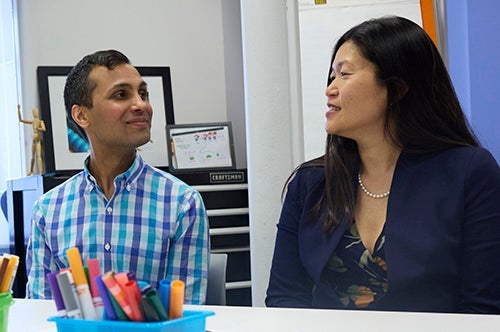
Weinstein was a primary mentor for Goldie. Goldie was a primary mentor for Kim. Pandya, who arrived in 2007 as a PhD student, has been mentored by both Weinstein and Goldie, and also credits Kim for serving as his “informal hallway mentor” when their offices were across from each other. (“She had the best snacks—can’t beat good advice and a fun snack!” said Pandya.) Jhang, who arrived in 2022 as an MPH student, has been mentored by Pandya and Goldie.
Goldie and Kim both emphasized the broader ecosystem of mentoring in the decision science community and the School. Goldie noted that CHDS plays a “value-added role” by bringing faculty identifying as decision analysts together from different departments at the School, other schools such as Harvard Kennedy School and Harvard Medical School, and the nearby academic hospitals. “We have more than 25 core and affiliated faculty, including those on tenure track, full professors, and senior research scientists” said Goldie. “They all contribute to teaching and mentoring. Jane, Ankur, and myself are just three of a tightly-knit group of dedicated mentors.”
Goldie was quick to credit her chair—Arnold Epstein, John H. Foster Professor of Health Policy and Management—for his longstanding emphasis on junior faculty mentoring in the department. “I think the standards that Arnie insisted on in HPM inspired me to develop processes and tools to support those standards, which ultimately benefited not only my mentees in HPM, but my mentees in other departments who were part of the CHDS community of faculty.”
Kim noted that the School has prioritized mentoring in recent years, reflecting her perspectives both as dean for academic affairs and as the interim dean of the School, a position she held for several months in 2023. For instance, she said, departments throughout the School have standards regarding how senior faculty should mentor tenure track faculty. And efforts are underway to set standards and offer training programs for how faculty should mentor graduate students.
Paying it forward
For Pandya, the culture of mentoring at the School, and in the health decision science group in particular, has had a huge influence on his academic experience.
He recalled how Weinstein was an “amazing advocate” for him. “Milt was positive but generally reserved in his praise for me in our one-on-one meetings or direct communications, but I’d hear from colleagues in the field who had read his recommendation letters or who talked to him on the phone about how highly he thought of me,” said Pandya. “That Milt did this somewhat stealthily (at least to me) almost made me feel like I had this guardian angel watching over me in my career. It gave me such a confidence boost where, in academia, it’s so easy to doubt oneself.”
Pandya credits Goldie’s mentorship with teaching him the strategic importance of establishing himself as an expert in something very definable—in his case, evaluating the cost-effectiveness of cardiovascular disease interventions, his focus in his early years as a faculty member. “That message helped me say ‘no’ to a lot of opportunities that used different methods or were applied to different diseases, which enabled me to focus on my area of expertise. I think Sue might have even said, ‘Tell them I said you can’t do it!’” as a way to make saying ‘no’ easier for me.”
He added, “When I was a mentee and received good mentorship, I remembered thinking, ‘Why are they doing this? They’re so famous in our field, why are they putting this much time and energy and thought into what I want to do and into helping me develop?’ And then I thought, ‘If I ever mentor someone else, I’ve gotta pay this forward. I’ve got to keep it going.’”
That “paying it forward” mentality is reflected in the number of teaching and mentorship awards received by decision science faulty. Pandya was awarded the Roger L. Nichols Excellence in Teaching Award in 2022. Goldie received that same award in 2020, as well as two mentoring awards from the School, and the Everett Mendelsohn Excellence in Mentoring Award from Harvard University. She proudly pointed out that CHDS faculty and students have received more than 25 awards for teaching and mentoring over the last five years.
On-ramp to a new field
Both Pandya and Goldie helped Jhang figure out that health decision science was the field she was interested in—and how far she wanted to go with it.
She had majored in policy analysis as an undergrad and loved it. “I discovered that my courses in health economics and policy explained the barriers to health and health care that I had observed as a hospital volunteer, as an intern at a nonprofit refugee service organization, and in my own Korean immigrant community back home in Philly,” Jhang said.
After college Jhang was a strategy consultant at IQVIA, working with clients in the pharmaceutical and biotech industries in areas including health disparities and access to care. However, she craved more creative freedom to pursue research questions that interested her—such as whether the value of a therapeutic changes if it impacts a patient population inequitably. She wanted more rigorous methodological training to answer that sort of question, and she wanted to work on broader policy issues—which is what led her to pursue an MPH in health policy at Harvard Chan School.
She compiled a list of faculty she might want to work with and Pandya was at the top. She thought his research on incorporating equity issues into cost-effectiveness analyses was interesting and at the cutting edge of the field, and he had a stellar reputation for teaching and mentoring. Pandya’s first piece of advice to Jhang was to check out Goldie’s videos on health decision science to familiarize herself with concepts in the field.
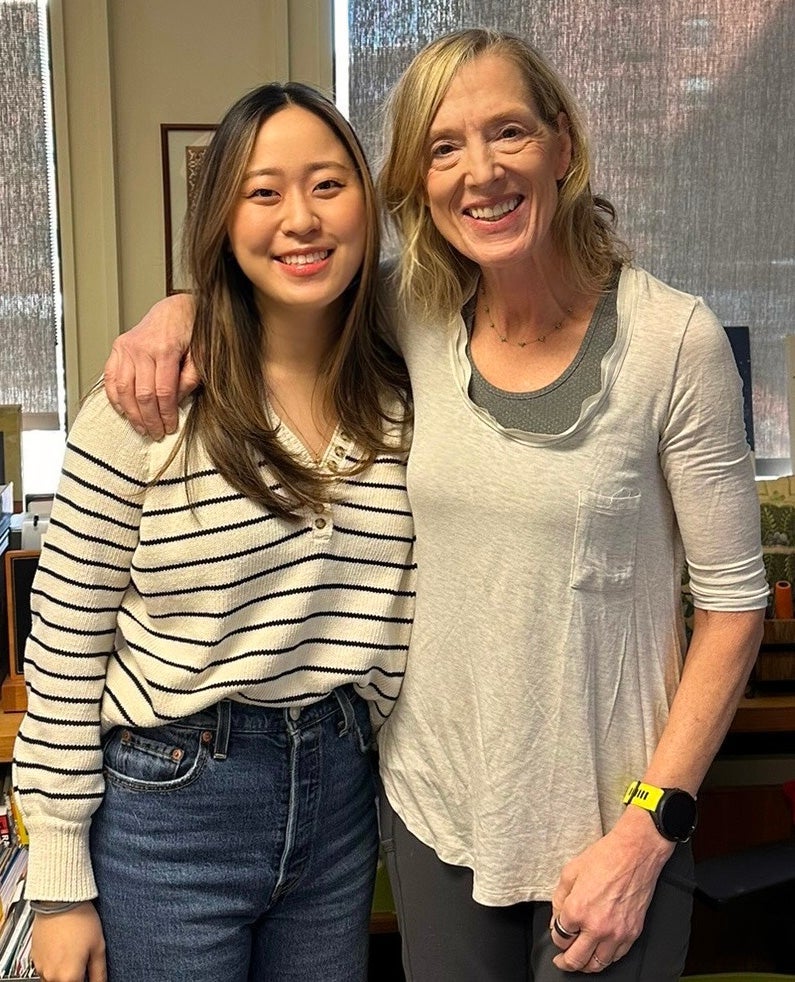
Midway through her first year of MPH studies, Jhang met with Goldie to talk about academic careers in decision science—a meeting that soon branched out into a discussion about the connections between education and policy translation. Ultimately, Jhang wound up working with Goldie on an educational project—creating open-access decision science modules or “learning experiences” that can be integrated into high school curricula, aimed at encouraging earlier interest and greater diversity in the field of health decision science. That opportunity, Goldie noted, was made possible thanks to an alumnus—Alan Colowick, MPH ’98—who established an Innovation Fund to support CHDS in recognition of the impact that Milt Weinstein’s mentorship and teaching had had on his career.
Said Jhang, “Sue and Ankur played an important role in helping me learn how to navigate new spaces, like this academic environment. … and what a path in academic research would look like.”
Jhang ultimately decided to proceed with pursuing a PhD and was accepted to all five programs she applied to. While Goldie and Pandya hoped she would choose Harvard Chan School they didn’t push her to do so. “We both stepped back and really encouraged her to consider what would be best for her, because having her stay at Harvard might be in our best interest, but not hers,” Goldie said. “And I think knowing how to give space and room to someone you’re mentoring to make their own decisions is a really important part of the art of mentoring.”
She added, “Of course, we were obviously thrilled when she did make the decision to stay.”
Tips of the trade
Four mentorship “generations” from Harvard Chan School’s health decision science community offer some helpful advice.
Sue Goldie, Roger Irving Lee Professor of Public Health and director of the Center for Health Decision Science
Build a team
Encourage a shift in mindset from “finding a single mentor” to “building a mentorship team.” Help mentees recognize that there are many dimensions of professional development and that their needs will continuously evolve. Help them build the skills needed to identify and approach people who can be helpful to them, and to foster those relationships over time.
Jane Kim, MPH ’01, PhD ’05, dean for academic affairs and K.T. Li Professor of Health Economics
You cannot expand the pie
Advise your mentees that there are only so many hours in the day. There’s only so much effort that you can put into your professional life. If you take a slice of the pie to work on a particular project or take on a new initiative, you have to take something else out of the pie.
Ankur Pandya, PhD ’12, associate professor of health decision science
Work backwards
Mentors should help their mentees articulate and shape their short- and long-term career goals. Well-articulated goals help the mentor outline and discuss the various decisions the mentee can make to best achieve these goals, accounting for any constraints or unknowns along the way. We structure public health problems using a similar “working backwards” process in health decision science research!
Janice Jhang, MPH ’24 and incoming PhD student in health policy
Be proactive
People aren’t just going to reach out to you because they want to mentor you. Finding a mentor takes commitment. It’s also okay to take a trial-and-error approach to find the right person who fits your working style and who has the time and resources to invest in you.
Feature photo: Kent Dayton
Additional photos courtesy Sue Goldie
